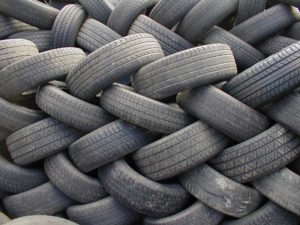Rise in dangerous level of van tyre wear reported
i247 Group has reported a rise in very low tyre treads on vans, putting fleets at increased risk of tyre failure and blowouts.

i247 has reported an increase in light commercial vehicles vans with under 2mm of tyre tread depth
The Poole-based outsourced driver support and asset management provider said it’s seeing an increase in light commercial vehicles with under 2mm of tyre tread depth – up from 30% of vans checked in 2019 to 40% in 2023.
There has also been a rising number of tyre defects leading to MOT failures on Class 5 vehicles – such as minibuses with 13 or more seats as well as ambulances.
David Legg, director of tyres at i247, commented: “Driving with worn tyres is dangerous, not just for the driver but for other road users too. We’re really concerned about the rise we’re seeing in fleets operating with low levels of tyre tread with some at illegal levels. We know van fleets are under pressure right now but we’re urging fleets to give their drivers time to carry out critical tyre checks regularly. This is especially important at this time of year when delivery volumes are so high.”
The group believes that the rise in worn tyres is being caused by the increasing pressure on van fleets. Post-pandemic demand for deliveries remains high, which means fleets are often double shifting – using one van for two driver shifts. Combined with an ongoing lack of commercial vehicle drivers, and this is putting scheduling pressures on drivers who lack the time to carry out critical maintenance checks.
Fleet operators have a duty of care responsibility to ensure vehicles are maintained in a roadworthy condition – but drivers are also legally responsible for the condition of the vehicle they drive and can be fined up to £300 and receive three penalty points or be taken to court if the offence is more serious.
Driving with heavily worn tyres affects a vehicle’s ability to brake efficiently and maintain sufficient surface grip during wet or winter conditions. Low tread tyres are also more likely to suffer punctures and lose air pressure which impacts fuel economy and steering.
Legg added: “Vehicle checks should take place in the same way as any other job critical tool pre-use. Fleets must ensure maintenance checks are being carried out. There are a number of tools and apps on the market to facilitate this which will help to ensure compliance and driver safety.”
i247 Group’s recently published tyre white paper spotlighted changing trends in tyre management, including for conventional vans and electric vehicles.
The report, available here, warned that the rising demand for home deliveries and the resultant rise in van usage has resulted in increased maintenance budgets and additional tyre wear for commercial vehicle fleets, particularly in urban locations where drivers are “constantly kerb bumping”.
It’s advised fleets to adopt proactive approach and review historic service, maintenance and repair (SMR) policies, helping them to manage an increasingly diverse fleet.












